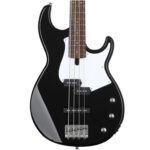The rhythm game genre experienced a thrilling resurgence in 2015, marked by the simultaneous arrival of two titans: Guitar Hero Live and Rock Band 4. For dedicated fans of plastic guitars and drum kits, like myself, this was a momentous occasion. Each title promised a distinct experience, sparking the crucial question for enthusiasts: which game truly deserves your attention, especially if you’re passionate about the Rock Band 4 guitar experience?
Having immersed myself in both games since their launch, fueled by my own enthusiasm (and budget!), I’m ready to provide an unbiased, detailed comparison to guide your decision. Let’s plug in and rock out.
Round 1: Backwards Compatibility – Can Your Old Guitars Join the Band?
For those of us who’ve accumulated a collection of plastic instruments from previous rhythm game eras, backwards compatibility is a significant factor. Being able to dust off those old guitars without investing in entirely new peripherals is a definite plus. Does Rock Band 4 let your legacy Rock Band guitar collection shine?
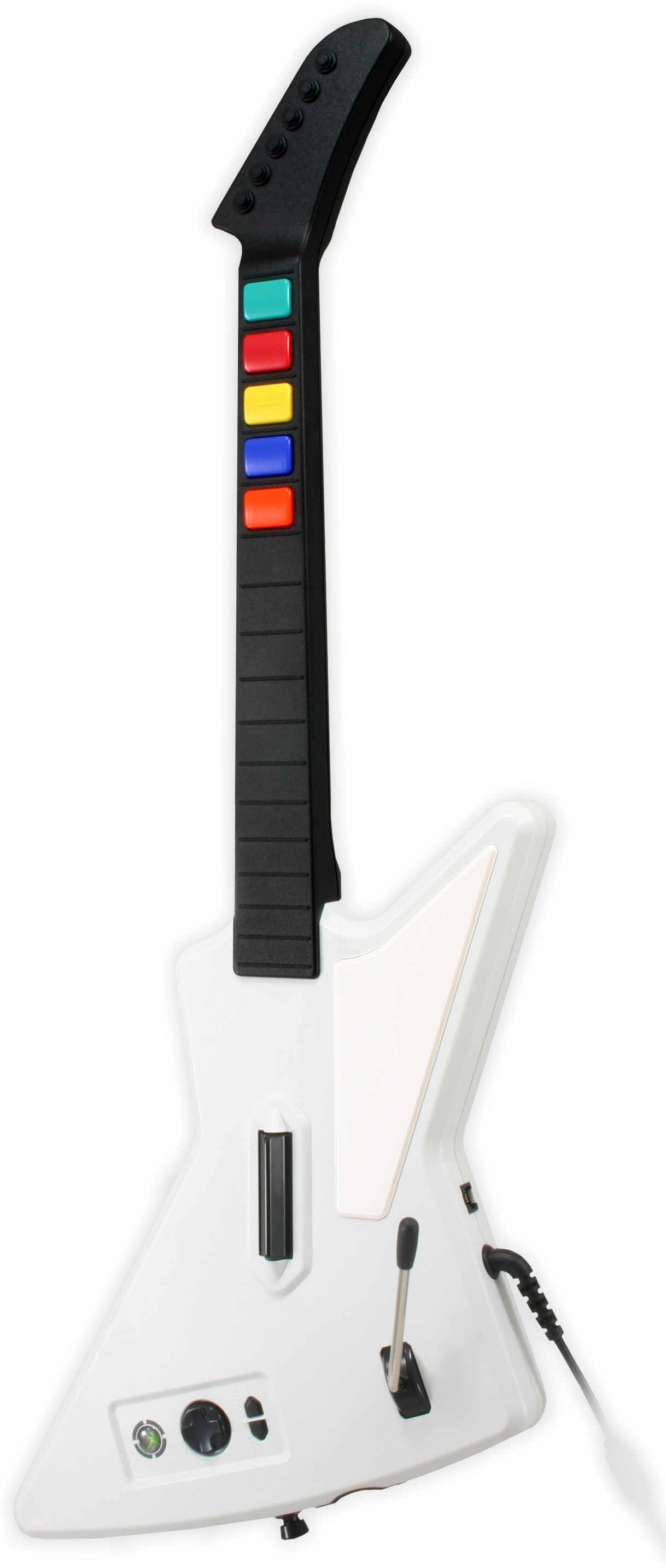 Sleep well, sweet prince of plastic video game instruments
Sleep well, sweet prince of plastic video game instruments
Rock Band 4 proudly champions backwards compatibility, and for the most part, it delivers. My trusty wireless Guitar Hero 3 Xbox 360 guitar synced seamlessly with the Xbox One version of Rock Band 4. This broad compatibility extends to many wireless Rock Band and Guitar Hero instruments from the previous generation, making it a welcoming platform for returning players.
However, the compatibility isn’t flawless. Microsoft’s device-signing protocols mean wired controllers, like my beloved Guitar Hero II Xplorer (my all-time favorite guitar controller for any Rock Band game), are unfortunately incompatible. This is a specific case, but wireless, last-gen guitar controllers should generally work without issue in Rock Band 4.
Guitar Hero Live, however, takes a different approach. Its radical departure with a brand new button configuration (more on that in the next section) renders all previous five-button guitar controllers obsolete. Therefore, none of your old instruments are compatible with Guitar Hero Live.
Winner – Rock Band 4: For players hoping to utilize their existing guitar peripherals, Rock Band 4 is the clear winner, ensuring your investment in past guitar controllers isn’t in vain.
Round 2: Guitar Gameplay – Strumming Tradition or Fretting Revolution?
While Rock Band expanded the rhythm game experience with drums, vocals, and even keyboards, for many, the guitar remains the core instrument. How do Rock Band 4 and Guitar Hero Live approach guitar gameplay, and which offers a more compelling experience for guitar players?
Rock Band 4 adheres to the classic five-color lane highway system that has defined the genre. If you’ve played any previous Rock Band or Guitar Hero game, picking up the Rock Band 4 guitar will feel instantly familiar.
Gameplay remains largely unchanged, with the notable addition of Freestyle Guitar Solos. During these sections, you can improvise any notes, and the game intelligently weaves them into a coherent-sounding solo.
 Rock Band 4
Rock Band 4
While these freestyle solos are a novel addition, their execution can be hit-or-miss, sometimes sounding a bit disjointed. Thankfully, they can be disabled for purists who prefer traditional guitar gameplay. Rock Band 4 is an evolution of the established formula, prioritizing familiarity and refinement for guitar players.
Guitar Hero Live, in contrast, is a revolution. It completely abandons the five-color system in favor of a brand-new guitar controller featuring two rows of three buttons on the neck. This innovative design fundamentally alters the guitar playing experience.
The new six-button system creates a different feel, one that arguably more closely mimics playing a real guitar. On higher difficulty levels, you’ll be navigating complex chords spanning both rows, and mastering these techniques provides a genuinely satisfying sense of accomplishment.
This radical redesign was a gamble, but developer Freestyle Games, renowned for their work on DJ Hero, had a proven track record of creating innovative peripherals. After an initial adjustment period, the Guitar Hero Live guitar system proves to be an improvement over the widely accepted five-button standard. In terms of pure guitar playing feel, Guitar Hero Live edges out Rock Band 4.
Winner – Guitar Hero Live: While Rock Band 4 provides a comfortable and familiar guitar experience, Guitar Hero Live‘s innovative guitar controller and gameplay offer a fresh and arguably more engaging challenge for dedicated guitar rhythm game players.
Round 3: Other Instruments – Is It Just About the Guitar?
This round highlights a fundamental difference in philosophy between the two games. Is the guitar the sole focus, or is the ensemble experience still vital?
Rock Band 4 remains committed to the full band experience. Drums, bass guitar, and vocals are all present and accounted for. Importantly, Rock Band 4 retains compatibility with most legacy wireless controllers for these instruments, continuing to support the band dynamic.
However, Rock Band 4 notably omits keyboard support, a surprising exclusion considering its potential in Rock Band 3. While guitar remains central, Rock Band 4 still champions the collaborative band gameplay experience.
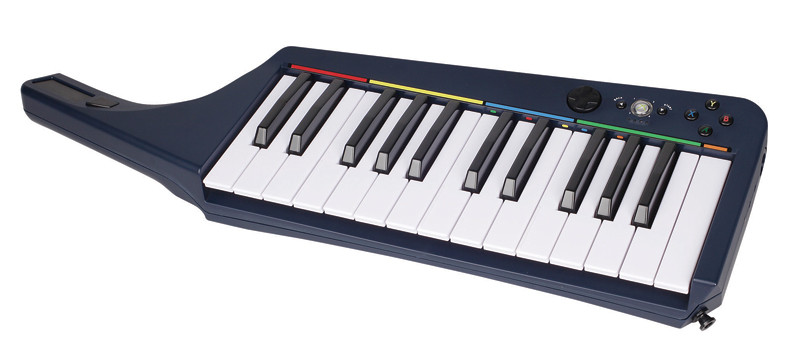 I suppose you can sleep well too, though I
I suppose you can sleep well too, though I
Guitar Hero Live, conversely, narrows its focus exclusively to the guitar experience. The game prioritizes the lead guitar role, eliminating drums and even bass guitar as playable instruments.
While Guitar Hero Live does offer a vocals mode via microphone or a companion app, the core gameplay is undeniably centered on mastering the guitar. For players solely interested in the guitar aspect of rhythm games, Guitar Hero Live provides a focused experience.
Winner – Rock Band 4: While Guitar Hero Live caters to guitar-centric players, Rock Band 4 wins by preserving the full band experience that many fans cherish. The option to play drums, bass, and sing alongside your guitar in Rock Band 4 offers a richer, more collaborative gameplay experience.
Round 4: Visual Design – Realistic Stages or Stylized Venues?
Visual presentation significantly impacts the overall immersion and enjoyment of rhythm games. Do Rock Band 4 and Guitar Hero Live create compelling visual environments for guitar players to shred in?
Rock Band 4 maintains a visual style consistent with previous entries in the series. While detail is enhanced, the overall aesthetic remains familiar, with stylized polygonal characters and venues.
The visual engine is designed to seamlessly integrate a vast library of downloadable songs, ensuring consistency in character animations and lip-syncing across DLC tracks. Rock Band 4‘s visuals are functional and familiar, prioritizing performance and consistency over drastic stylistic changes.
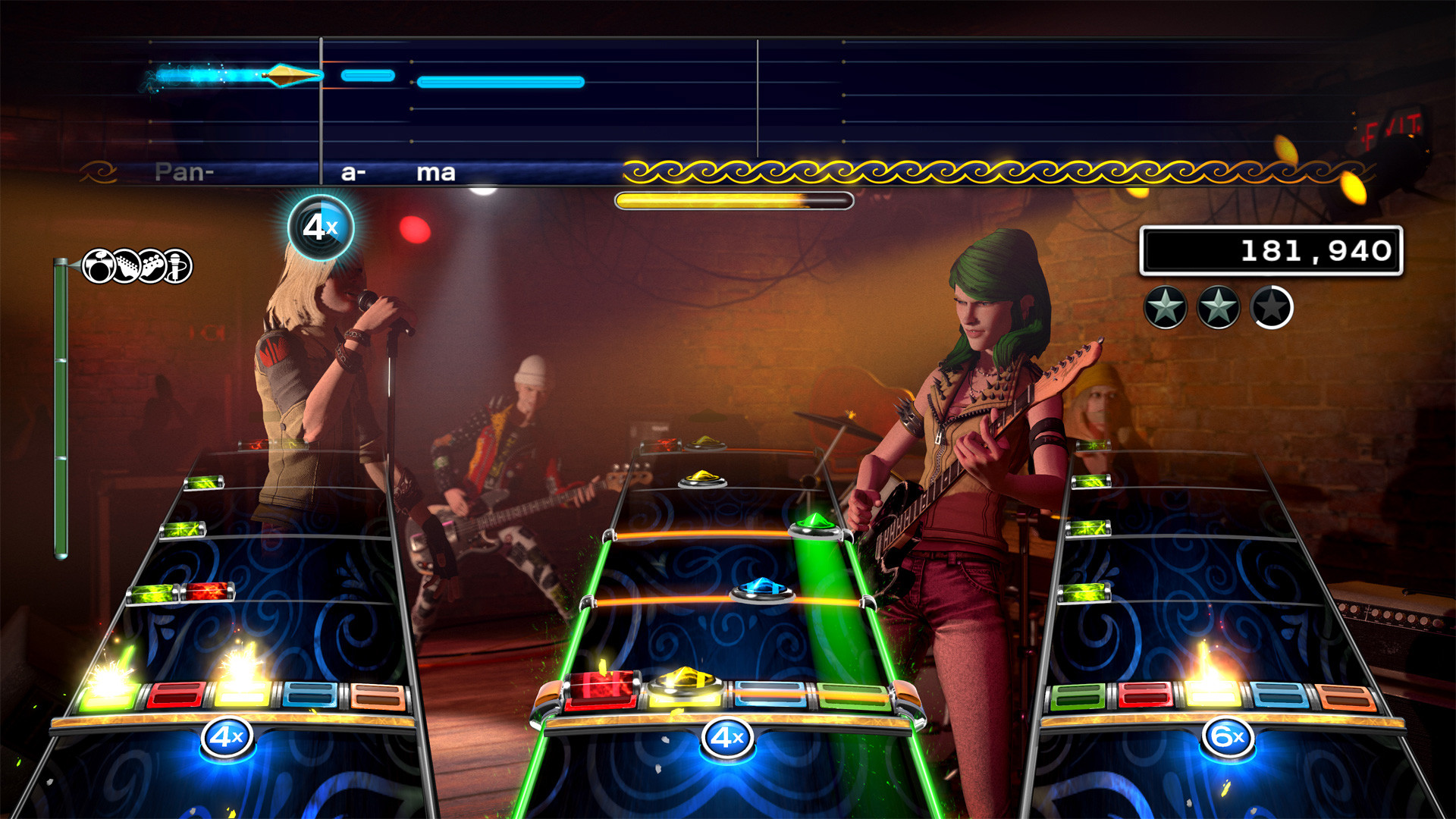 Let
Let
Guitar Hero Live adopts a drastically different visual approach, centered around full-motion video (FMV). This design choice manifests in two distinct modes: Guitar Hero TV (GHTV) and GH Live.
GHTV presents a streaming music channel format, where you play along to official music videos. This mode offers a unique way to discover new music and artists, enhancing the guitar playing experience with real-world visuals.
GH Live mode places you in first-person perspective at live gigs, with crowd reactions dynamically responding to your performance. While innovative, the execution can feel somewhat dated, reminiscent of FMV games from the 90s, and the “good” vs “bad” performance transitions can be jarring.
Furthermore, the hyper-realistic, almost idealized portrayal of band members and crowds in GH Live can feel artificial and even off-putting to some players.
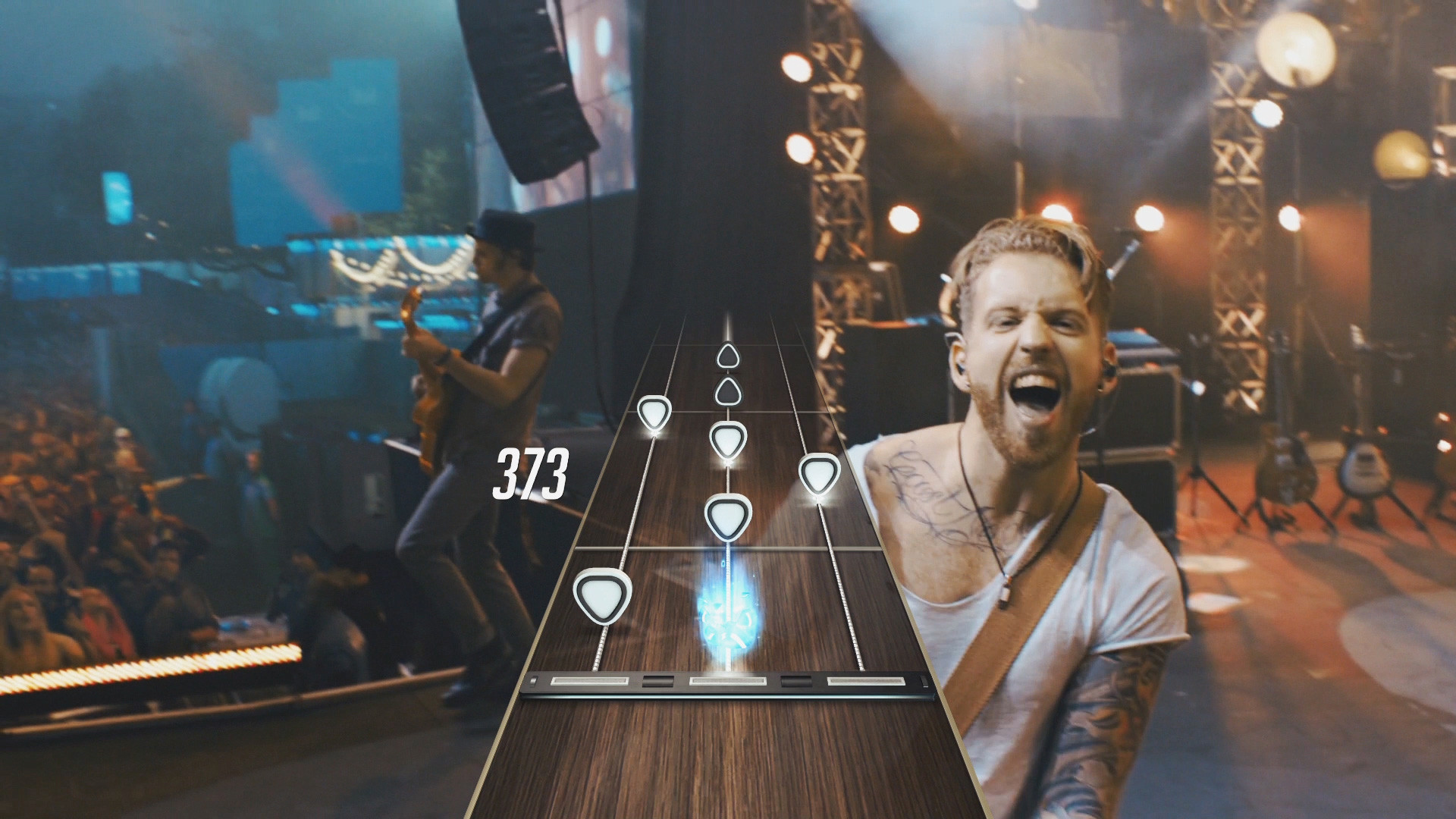 Get off my fucking telly, you complete and utter immaculate moron
Get off my fucking telly, you complete and utter immaculate moron
Despite the questionable execution of GH Live’s aesthetic, GHTV’s music video integration provides a visually engaging and unique experience that gives Guitar Hero Live an edge in this category.
Winner – Guitar Hero Live: While both games offer distinct visual styles, Guitar Hero Live‘s GHTV mode, with its integration of official music videos, provides a more visually dynamic and modern experience for guitar players.
Round 5: On-Disc and Free Content – Initial Song Library
For players hesitant to invest in downloadable content, the initial on-disc song library is crucial. Which game offers a more substantial and diverse setlist for guitar players right out of the box?
Rock Band 4 features a robust on-disc library of 65 songs, spanning classic tracks from the 1960s to contemporary hits. While the on-disc content is substantial, expanding the song library beyond this initial setlist requires purchasing DLC.
Guitar Hero Live‘s GH Live mode includes a smaller setlist of 42 on-disc songs. However, the GHTV mode launched with an impressive library of 200+ music videos available for streaming and play at no additional cost. This library has continued to grow since launch, offering a constantly expanding stream of free content.
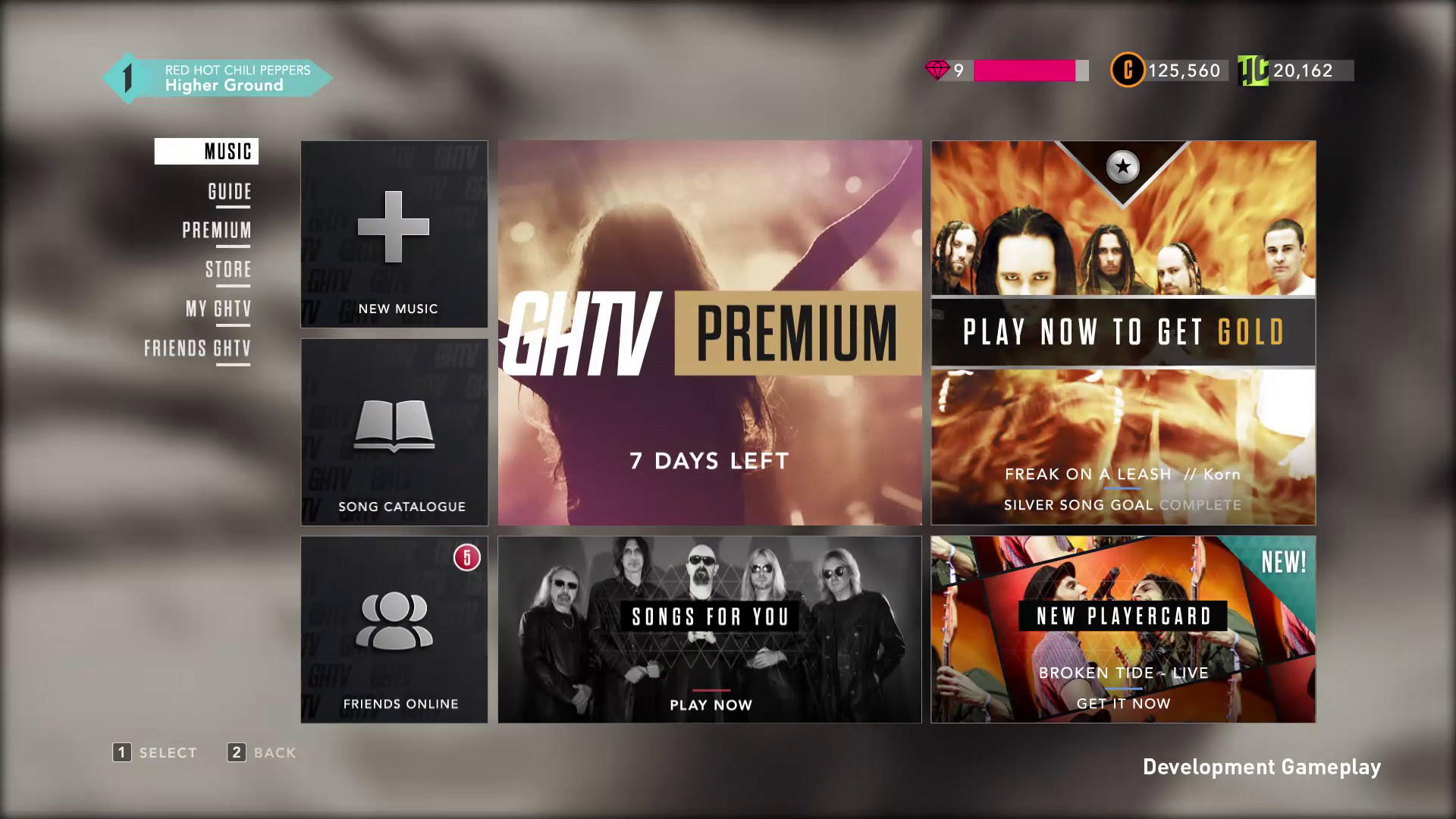 The GHTV mode in all its glory. This is Guitar Hero Live
The GHTV mode in all its glory. This is Guitar Hero Live
While GHTV’s streaming nature means you don’t have on-demand access to every song at all times, the sheer volume of free content, accessible through earned in-game currency or play tokens, gives Guitar Hero Live a significant advantage in initial content offering.
Winner – Guitar Hero Live: For players prioritizing a large initial library of songs without additional purchases, Guitar Hero Live‘s GHTV mode provides significantly more content than Rock Band 4’s on-disc selection.
Round 6: Downloadable Content – Building Your Music Library
For players willing to invest in downloadable content to expand their music libraries, which game offers a more appealing and sustainable DLC ecosystem?
Guitar Hero Live‘s GHTV library, while extensive, operates on a token-based system for on-demand song plays. You don’t truly “own” these songs; access requires either waiting for them to appear on rotation or spending tokens, creating a potentially recurring cost for playing specific tracks repeatedly.
Furthermore, the FMV-heavy nature of GH Live mode, with its bespoke videos for each song, makes adding new DLC tracks to this mode prohibitively expensive. Consequently, GH Live mode DLC is unlikely.
Rock Band 4 adopts a traditional DLC model. A vast majority of Rock Band 3‘s extensive DLC library has been ported to Rock Band 4, creating a massive catalog of over 1500 songs available for purchase.
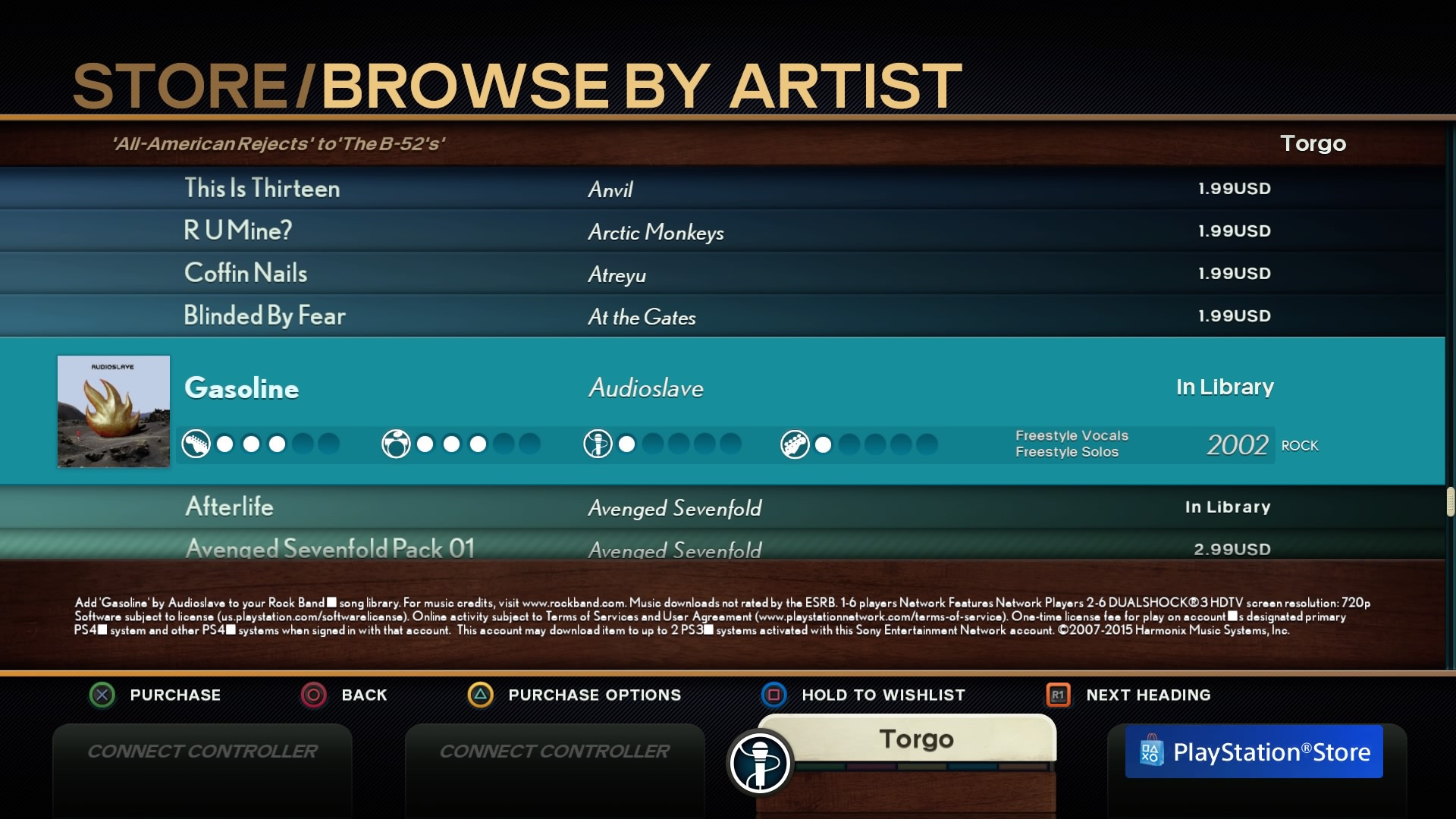 You can even buy Audioslave stuff if you want to pretend it
You can even buy Audioslave stuff if you want to pretend it
Crucially, purchasing Rock Band 4 DLC grants permanent ownership, allowing unlimited plays of those songs. For players looking to build a substantial, owned library of guitar tracks, Rock Band 4 is the superior choice.
Winner – Rock Band 4: If building a large, permanently owned library of downloadable guitar songs is a priority, Rock Band 4’s robust DLC ecosystem and ownership model make it the clear winner.
Round 7: Single-Player Guitar Experience – Solo Shredding
Rhythm games cater to both solo and multiplayer experiences. Which game provides a more engaging and rewarding single-player experience, particularly for guitar players?
Guitar Hero Live, with its focus on lead guitar, first-person perspective, and streamlined instrument set, is clearly designed with single-player in mind.
The GHTV mode features a profile progression system, rewarding players with experience points, level-ups, and unlockable items like highway styles and profile icons. GHTV songs also feature specific challenges, adding replayability and encouraging mastery. Guitar Hero Live offers a compelling sense of progression for solo guitar players.
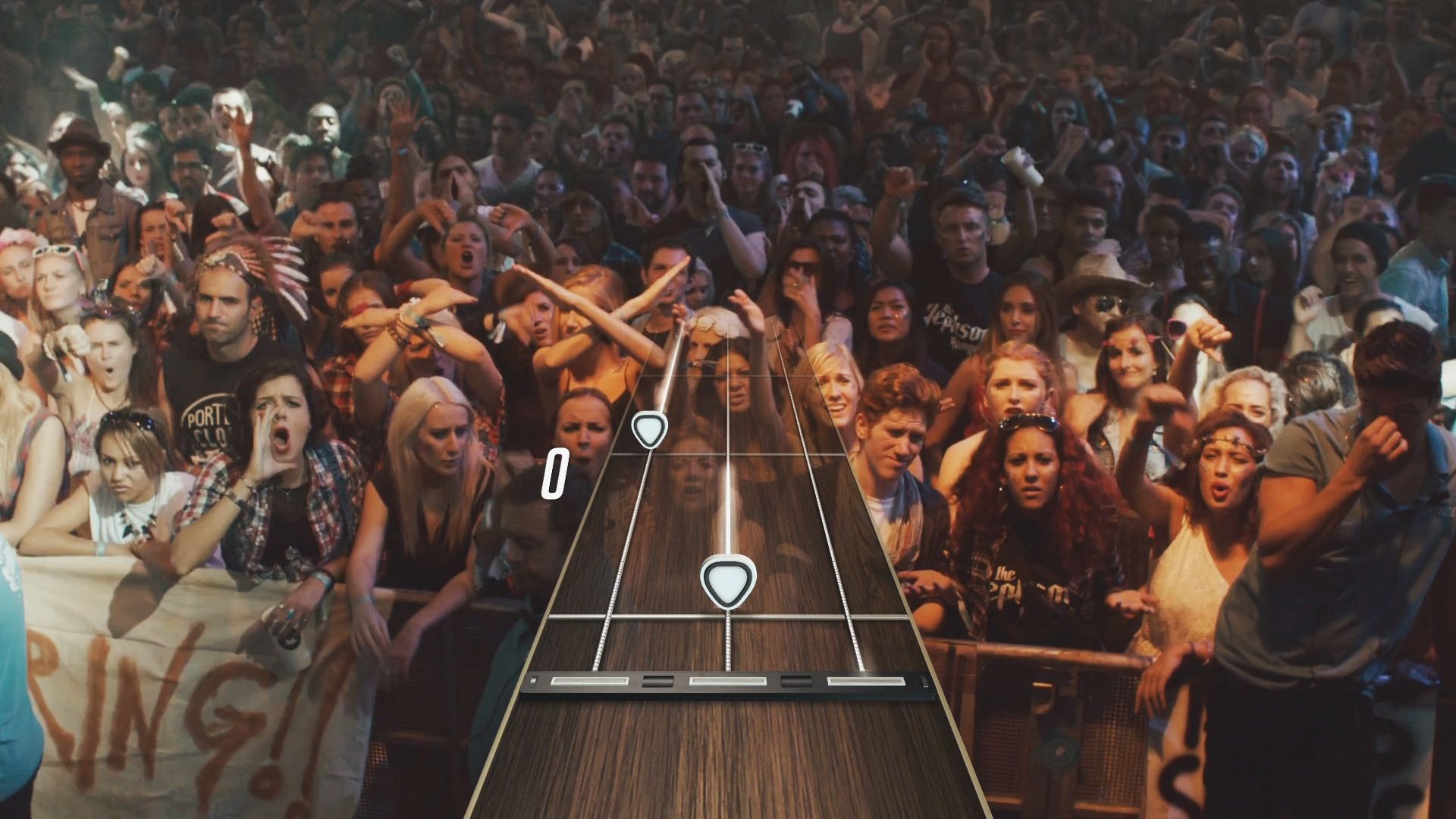 You
You
Rock Band 4‘s career mode feels comparatively short, especially compared to Rock Band 3. Beyond career mode, single-player options are limited to Quick Play mode, lacking a strong sense of progression or structured solo gameplay for guitar players.
Winner – Guitar Hero Live: For players primarily seeking a compelling single-player guitar experience with progression and replayability, Guitar Hero Live‘s GHTV mode offers a more engaging and rewarding solo journey.
Round 8: Local Multiplayer – Banding Together in the Living Room
For many rhythm game enthusiasts, the genre truly shines in local multiplayer, bringing friends and family together for musical mayhem. Which game offers a superior local multiplayer experience, especially for guitar players and band gameplay?
Guitar Hero Live falls significantly short in local multiplayer. It only supports a second guitar in GHTV mode, and even then, players are competing for individual scores rather than collaborating as a band. This competitive, guitar-centric approach undermines the social, cooperative spirit of rhythm game multiplayer.
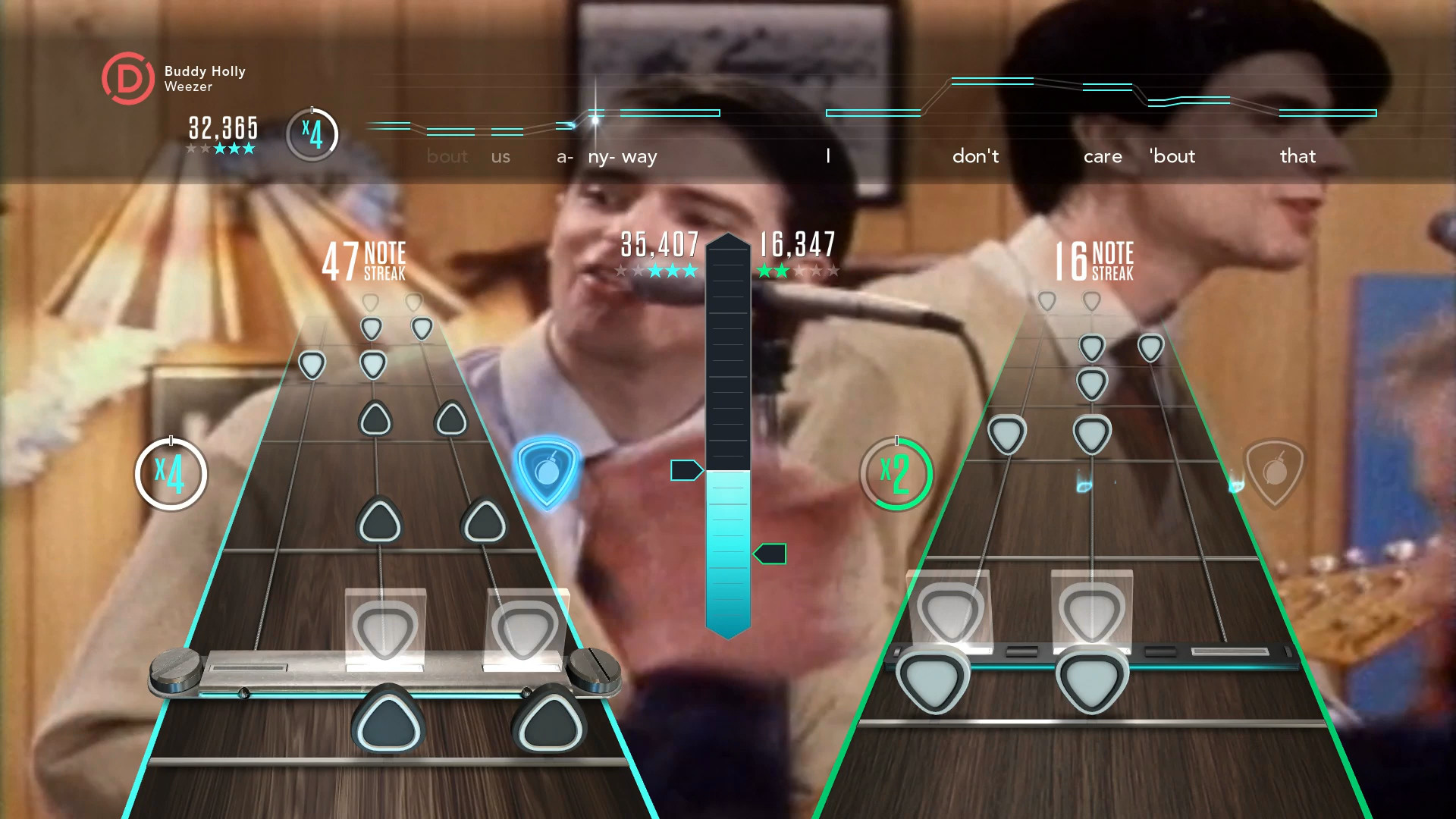 Not even Weezer can make local multiplayer better in Guitar Hero Live
Not even Weezer can make local multiplayer better in Guitar Hero Live
Rock Band 4, in contrast, excels in local multiplayer. It retains the classic four-player band dynamic, allowing players to jam together on guitar, bass, drums, and vocals. While not revolutionary, Rock Band 4 delivers a familiar and fantastic local multiplayer experience, fostering collaboration and shared musical enjoyment.
Winner – Rock Band 4: For players prioritizing local multiplayer and the social band experience, Rock Band 4 is the definitive choice, offering robust four-player band gameplay that Guitar Hero Live simply cannot match.
Round 9: Ongoing Updates – The Future of the Games
Both Harmonix and Activision have positioned Rock Band 4 and Guitar Hero Live as evolving platforms, promising ongoing updates and support. How have these promises materialized, and which game demonstrates a stronger commitment to long-term support and new content?
Rock Band 4 has received updates adding social score challenge features, character customization options, and the challenging Brutal mode. These updates demonstrate a commitment to enhancing core gameplay and adding new features.
Guitar Hero Live has consistently expanded its GHTV library with new songs (over 90 added since launch) and customization options like themed note highways. It also introduced an online multiplayer mode, matching players of similar skill levels for competitive GHTV sessions.
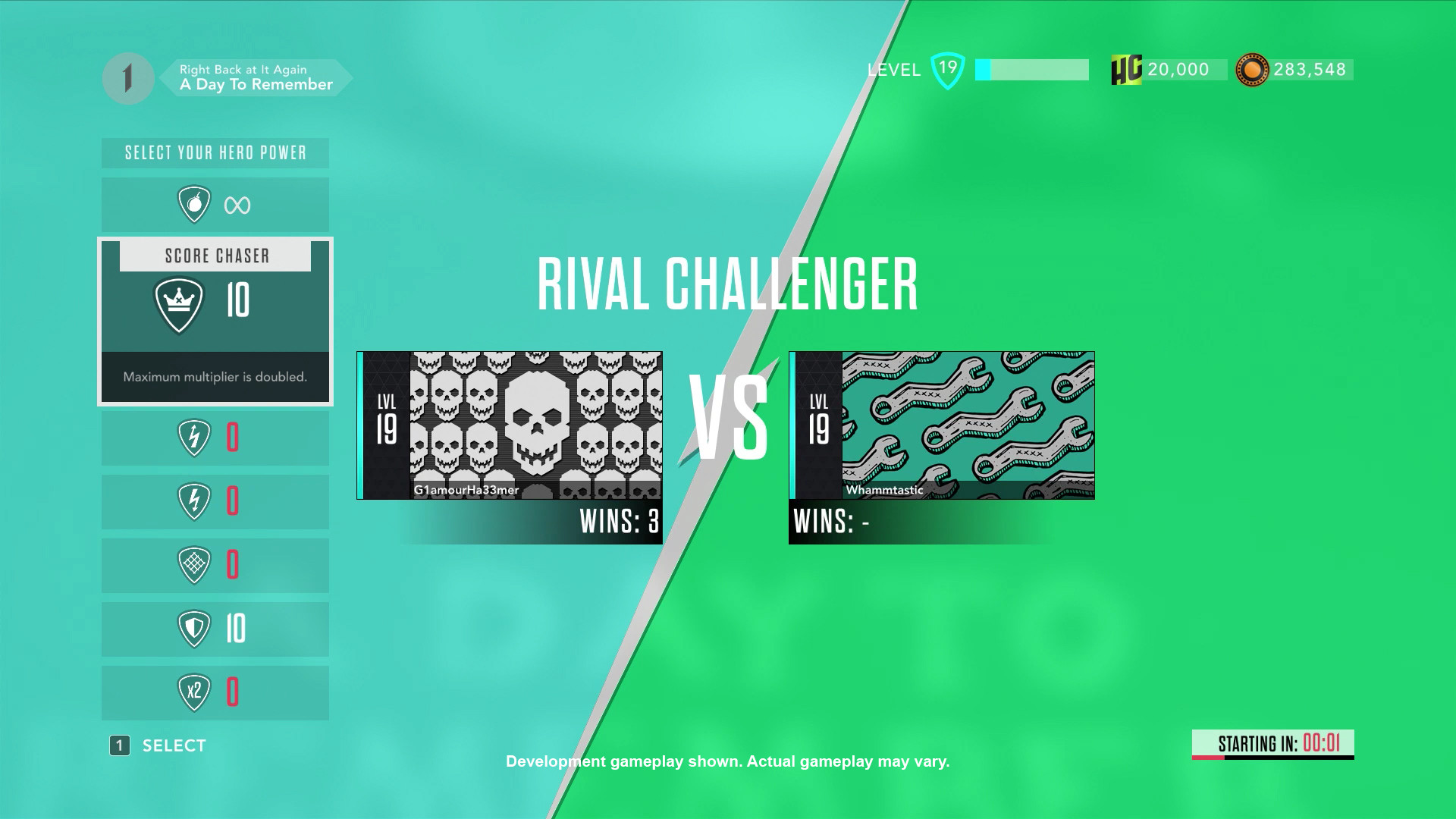 Guitar Hero Live Rivals mode
Guitar Hero Live Rivals mode
Both games have demonstrated a commitment to ongoing support, adding new content, features, and customization options. It’s a positive sign for the longevity of both platforms.
Winner – Draw: Both Rock Band 4 and Guitar Hero Live have shown a commitment to ongoing updates and support, ensuring continued content and feature additions for players.
The Verdict: Choosing Your Guitar Game Champion
After a thorough examination across nine rounds, the ultimate decision between Guitar Hero Live and Rock Band 4 hinges on your individual playstyle and priorities.
If you’re primarily a solo guitar player seeking a focused, progression-driven experience, and local multiplayer is a low priority, Guitar Hero Live is undoubtedly the stronger choice.
 Yes, even despite these beautiful arseholes
Yes, even despite these beautiful arseholes
Despite its sometimes cheesy FMV visuals, GHTV mode offers a compelling single-player journey, and the innovative six-button guitar controller provides a fresh and challenging gameplay experience. For solo guitar enthusiasts, Guitar Hero Live offers a unique and engaging experience.
However, if you value local multiplayer, the full band experience, and building a vast, owned library of songs, Rock Band 4 remains the undisputed champion.
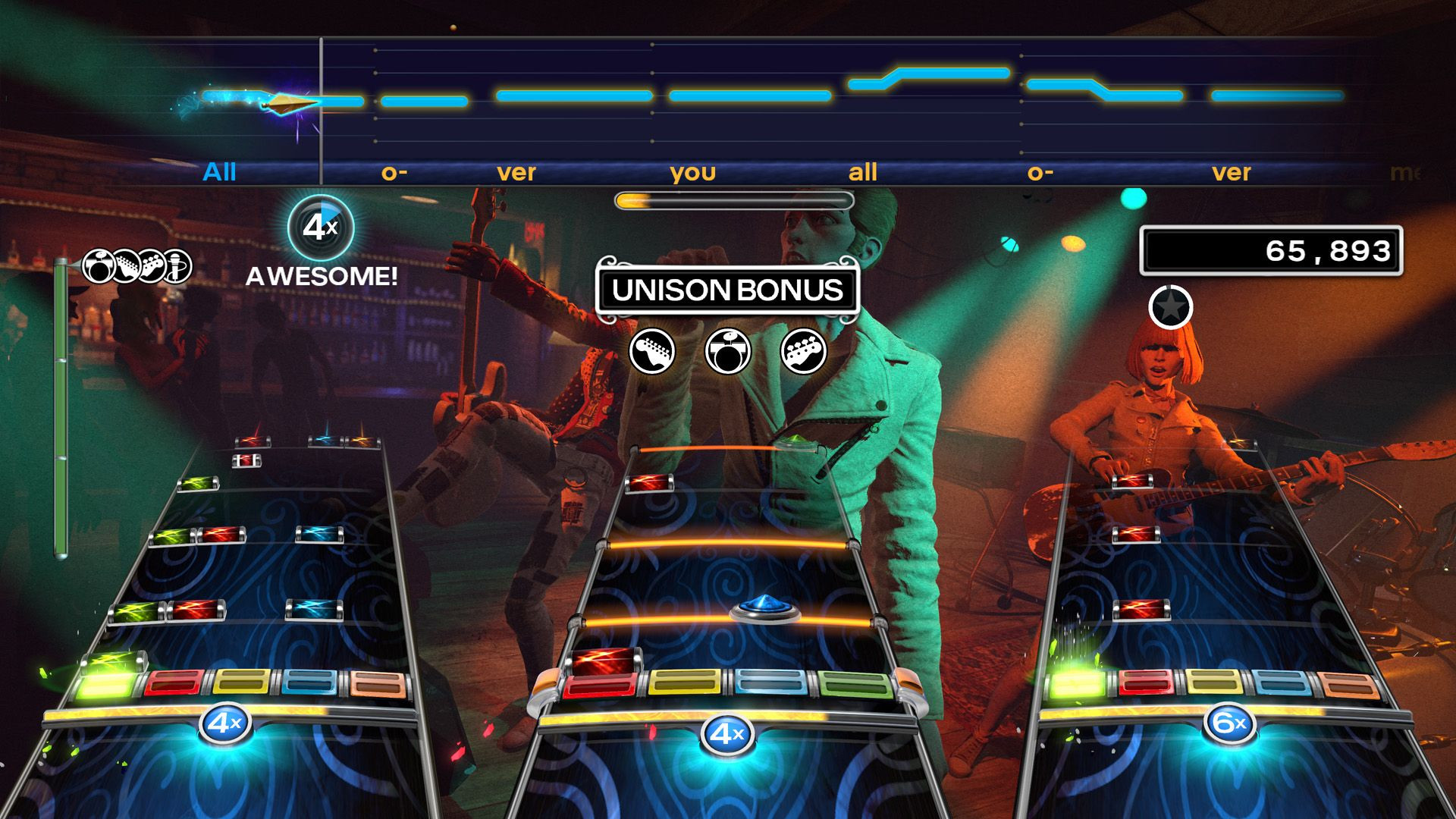 Rock Band 4 pic 2
Rock Band 4 pic 2
While its single-player may be less developed, Rock Band 4‘s unparalleled local multiplayer, backwards compatibility for guitar controllers, and extensive DLC library make it the definitive choice for social gamers and long-term music library growth.
Price and platform availability also play a role. Guitar Hero Live is often more affordable initially, while Rock Band 4 can become more cost-effective if you utilize existing instruments. Guitar Hero Live also has broader platform availability, including older consoles.
In conclusion, both Guitar Hero Live and Rock Band 4 offer compelling rhythm game experiences. For solo guitar shredders seeking innovation, Guitar Hero Live shines. For social gamers and band enthusiasts who value the classic rhythm game experience and a vast music library, Rock Band 4 remains the king. Ultimately, the best choice depends on your personal preferences and how you plan to play.

